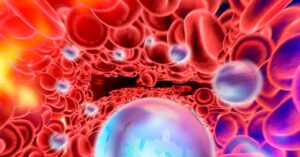
A groundbreaking study from Michigan State University (MSU), recently published in Nature Communications, has revealed how the multidrug-resistant superfungus Candida auris uniquely reconstructs its cell wall to survive antifungal treatments. This discovery marks a significant step toward understanding and combating one of the most dangerous fungal pathogens threatening hospitalized patients worldwide.
Led by Tuo Wang, a Carl Brubaker Endowed Professor at the Department of Chemistry, the research compares C. auris with its more common relative, Candida albicans. While both species share similar cell wall structures, the study shows they deploy markedly different strategies to resist echinocandins — a class of frontline antifungal drugs.
Understanding the Threat: Candida Auris vs. Candida Albicans
“Invasive infections by Candida species are a growing threat, especially with the rise of drug-resistant species like C. auris and complications from COVID-19-related candidiasis,” said Wang. “Our study provides high-resolution insight into how these fungi adapt to treatment.”
Using advanced solid-state nuclear magnetic resonance spectroscopy, the team found that both fungi experience stiffening of key cell wall polysaccharides—such as β-1,6-glucans and mannan sidechains—when treated with the antifungal drug caspofungin. However, while C. albicans thickens its cell wall and alters chitin and glucan dynamics in response, C. auris takes a different approach: it increases production of β-1,6-glucan to preserve its structural integrity.
The Role of β-1,6-Glucan in Drug Resistance
The study also sheds light on the long-mysterious role of β-1,6-glucan, an underexplored component of fungal cell walls that appears to play a critical role in drug resistance. “Gene deletion and subsequent structural analysis revealed that β-1,6-glucan is directly tied to how C. auris responds to antifungal drugs like micafungin and caspofungin,” Wang explained.
The interdisciplinary research team included MSU graduate students Kalpana Singh and Malitha Dickwella Widanage, visiting scholar Yifan Xu (now entering MSU’s Chemistry PhD program), and postdoctoral associate Jayasubba Reddy Yarava.
Collaborative Efforts and Technological Advancements
This interdisciplinary effort was strengthened by contributions from leading microbiologists, including Dr. Frederic Lamoth’s team at Lausanne University Hospital and the University of Lausanne (Switzerland), Dr. Neil A. R. Gow of the University of Exeter (UK), and Dr. Ping Wang of Louisiana State University Health Sciences Center. The research also benefited from access to state-of-the-art instrumentation at the National High Magnetic Field Laboratory (Tallahassee, Florida), with technical support from Dr. Frederic Mentink-Vigier and Dr. Faith Scott.
The announcement comes as the global medical community continues to grapple with rising cases of drug-resistant infections. The World Health Organization has identified Candida auris as a serious global health threat due to its resistance to multiple antifungal drugs and its ability to cause outbreaks in healthcare settings.
Implications for Future Antifungal Therapies
Ultimately, the research not only clarifies how C. auris survives drug treatment but also offers a roadmap for designing more effective antifungal therapies in the future by targeting species-specific structural adaptations. This development follows a growing need for innovative solutions as traditional antifungal treatments become less effective against emerging resistant strains.
According to experts, understanding the unique mechanisms of drug resistance in C. auris could lead to breakthroughs in treatment strategies. By targeting the specific adaptations that allow these fungi to withstand current medications, researchers hope to develop therapies that can overcome these defenses and reduce the incidence of severe fungal infections.
Meanwhile, the study’s findings may prompt further research into other drug-resistant pathogens, potentially leading to broader applications in combating multidrug resistance across various infectious diseases.
As the fight against drug-resistant infections continues, the insights gained from this study represent a promising step forward. The move represents not only a scientific achievement but also a beacon of hope for patients and healthcare providers battling these formidable fungal foes.







